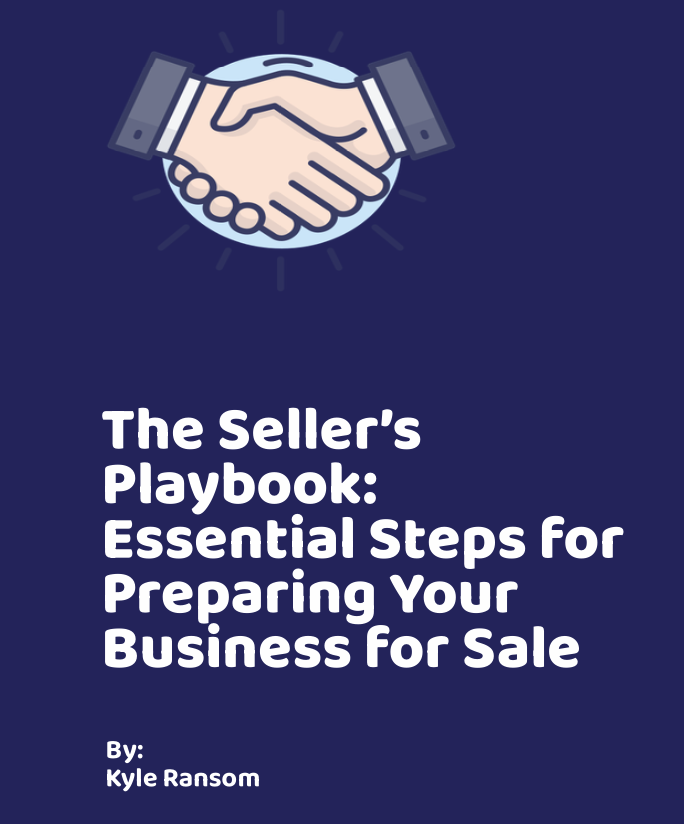
What Are Sweat Equity Buyouts and Why They’re Game-Changers
If you’ve built a business from scratch, odds are your blood, sweat, and tears went into it. But what if I told you your key employees can do the same—to buy it from you? Yep, that’s the magic of sweat equity buyouts.
In a sweat equity buyout, a trusted team member or manager earns equity over time through continued work, rather than shelling out a large upfront check. You, the owner, get a phased exit. They get ownership without taking on massive debt. That’s what we call a win-win.
This structure is especially useful in the business selling world if you’re short on outside buyers or want to keep your legacy in capable hands.
These deals are all about alignment—of values, effort, and timing. And spoiler alert: they’re way more common (and successful) than you might expect.
Let’s explore everything you need to know to structure a smart and profitable sweat equity buyout.
Why Sweat Equity Buyouts Make Sense for Small Business Owners
Every year, tens of thousands of retiring business owners struggle to find the “ideal” third-party buyer. Many don’t realize the solution is often right under their nose—their GM, operations lead, or partner-in-training.
Sweat equity buyouts are perfect when your employees lack the funds for a traditional acquisition but have the desire, loyalty, and know-how to run the show. Instead of a bank loan or SBA financing, their ‘payment’ is their continued commitment, often tied to performance milestones or vesting periods.
Plus, there’s major upside for you: a smoother handing-off, minimized business disruption, and the reassurance that your company—and team—will be in good hands.
Structuring the Perfect Sweat Equity Deal
The secret sauce to any successful SBO? A rock-solid agreement and a clear path to full ownership. Let’s break this down:
- Valuation First: Start with a fair, transparent business valuation. Even if they’re earning equity, your successor needs a benchmark.
- Phased Exit: Divide ownership into stages. Maybe 30% over three years through hit KPIs, then 70% via seller-financing.
- Operating Agreement: Spell out roles, expectations, investor protections, and what happens if someone bails midway.
- Profit Participation: Use profit-sharing as both incentive and partial consideration toward purchase.
Put simply—be flexible, but don’t wing it. Legal and financial advisors are must-haves here.

Pitfalls to Avoid in Sweat Equity Buyouts
While sweat deals can be excellent, there are a few landmines to flag early:
1. Misaligned Expectations: Ensure the buyer knows what ownership really means—risks, rewards, taxes, and tough calls. Training and mentorship are critical.
2. Lack of Commitment: If you’re giving significant equity, your buyer should be 100% in. Sloppy timelines and unclear terms lead to friction fast.
3. No Backup Plan: Always have a ‘Plan B.’ If your inside buyer can’t finish the deal, know your options—co-buyers, partial sales, or outside listings.
Remember, this isn’t just a handshake deal. The more clarity you bring, the more likely it’ll be a successful long-term transition.
How to Know If Sweat Equity Buyouts Are Right for You
Thinking this might be the right move, but not 100% sure? Ask yourself a few quick questions:
- Do you have a team member who already thinks and acts like an owner?
- Would you rather gracefully exit over time than sell to someone you’ve never met?
- Are upfront cash offers unlikely in your industry or market?
If you said “yes” to at least two of those, sweat equity buyouts may be the smartest way to protect your legacy and make your exit on your terms.
FAQ: What industries are best for sweat equity buyouts?
They work across many sectors—especially home services, trades, healthcare, and small professional firms. Wherever you’ve got strong team loyalty and stable cash flow, sweat equity is a viable solution.
FAQ: How much equity should I offer in a sweat deal?
That depends on your timeline, valuation, and team member’s role. A common path is offering 20–30% over three years, with a path toward 100% subject to targets and financing the rest.
FAQ: Can sweat equity buyers use bank loans eventually?
Absolutely. Many SMB buyers use a mix—sweat equity up front, then SBA loans or seller financing later. It helps reduce risk on both sides and creates a cleaner ownership transfer.
FAQ: What’s the tax impact for seller and buyer?
Sweat equity can trigger taxable events, especially if valued improperly. Always work with a tax advisor—structure matters more than you might think.
FAQ: How long do these transitions normally take?
Anywhere from 2–5 years depending on deal complexity, financial health, and buyer readiness. The key is gradual ownership paired with clear KPIs and timelines.
Why Sweat Equity Buyouts Belong in Every Exit Strategy
If you’re building your exit strategy toolkit, sweat equity buyouts should be right at the top. They’re creative, practical, and deeply human—a powerful way to reward loyalty while protecting your exit goal.
You’re not only selling a business. You’re creating a legacy, passing it on to someone who’s helped build it with you. With the right structure, you can step away with confidence—and maybe even mentor your successor along the way.
Thinking about exploring a sweat equity sale? Don’t go it alone. We’ve structured dozens of successful deals. Let’s connect and make yours happen.


No responses yet